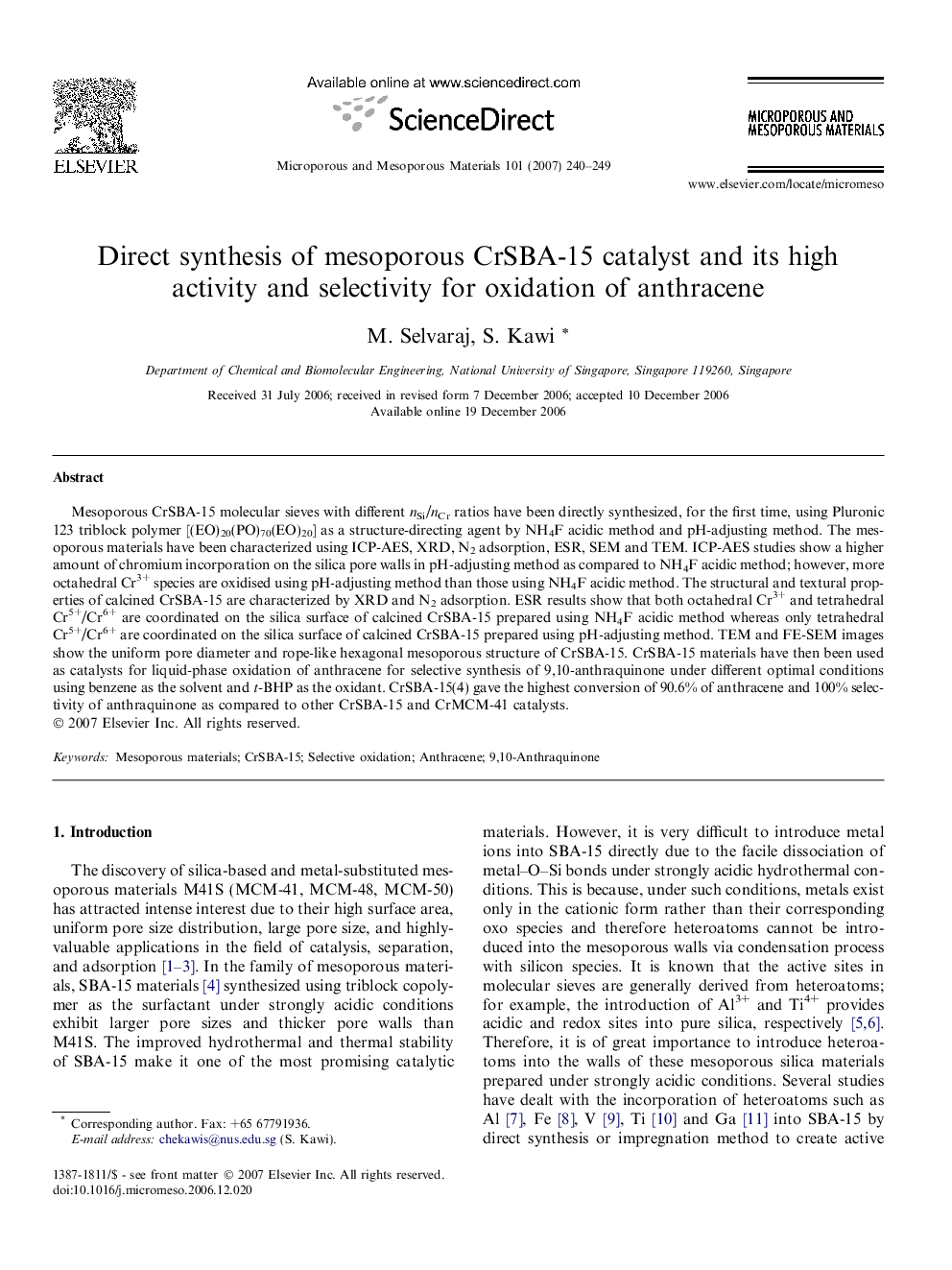| Article ID | Journal | Published Year | Pages | File Type |
|---|---|---|---|---|
| 77149 | Microporous and Mesoporous Materials | 2007 | 10 Pages |
Mesoporous CrSBA-15 molecular sieves with different nSi/nCr ratios have been directly synthesized, for the first time, using Pluronic 123 triblock polymer [(EO)20(PO)70(EO)20] as a structure-directing agent by NH4F acidic method and pH-adjusting method. The mesoporous materials have been characterized using ICP-AES, XRD, N2 adsorption, ESR, SEM and TEM. ICP-AES studies show a higher amount of chromium incorporation on the silica pore walls in pH-adjusting method as compared to NH4F acidic method; however, more octahedral Cr3+ species are oxidised using pH-adjusting method than those using NH4F acidic method. The structural and textural properties of calcined CrSBA-15 are characterized by XRD and N2 adsorption. ESR results show that both octahedral Cr3+ and tetrahedral Cr5+/Cr6+ are coordinated on the silica surface of calcined CrSBA-15 prepared using NH4F acidic method whereas only tetrahedral Cr5+/Cr6+ are coordinated on the silica surface of calcined CrSBA-15 prepared using pH-adjusting method. TEM and FE-SEM images show the uniform pore diameter and rope-like hexagonal mesoporous structure of CrSBA-15. CrSBA-15 materials have then been used as catalysts for liquid-phase oxidation of anthracene for selective synthesis of 9,10-anthraquinone under different optimal conditions using benzene as the solvent and t-BHP as the oxidant. CrSBA-15(4) gave the highest conversion of 90.6% of anthracene and 100% selectivity of anthraquinone as compared to other CrSBA-15 and CrMCM-41 catalysts.
